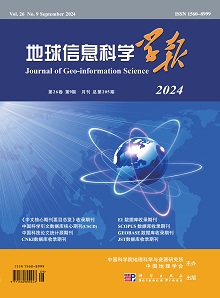几种常用土壤性质制图方法的稳定性及影响因素分析与比较
引用次数: 0
摘要
在河南省北部27955 km2的土地上采集了870份土壤样本。两个亚组共435份样品分别用于土壤性质制图,即交换阳离子(CEC)和总氮(TN)含量。计算两亚组制图结果的差异。比较了Kriging法、逆距离权值法(IDW)和点值法(PRP)的稳定性,并对其影响因素进行了讨论。结果表明:(1)实测数据与预测数据之间的均方根误差(RMSE)和相关系数(R)不能代表制图的稳定性,即土壤性质空间格局的回归概率。(2) Kriging法和IDW法的稳定性显著优于PRP法。相对差值小于0.3的面积在Kriging和IDW作图中未达到总面积的20%,而在PRP作图中达到51.57%。前两种方法的差异程度高的区域在差异图中是分散的,而PRP方法的差异程度高的区域是集中的,并以大多边形表示。(3)样品分布和局部土壤的高变异性影响了土壤性质制图结果的稳定性。与IDW和PRP法相比,Kriging法在保持稳定性方面更注重样本分布。在后两种方法中,数据值之间的高度可变性显示出令人印象深刻的影响。本文章由计算机程序翻译,如有差异,请以英文原文为准。
Analysis and Comparison in Stabilities and Related Influence Factors for Several Common Methods Used in Soil Property Mapping
Total 870 soil samples were collected from the north of Henan Province over a 27 955 km2 area.Two subgroups with 435 samples were respectively used in soil property map-making,i.e.the content of exchangeable cations(CEC) and the total nitrogen(TN).The difference of map-making results between two subgroups was calculated.The stability among Kriging method,inverse distance weight method(IDW) and polygon value represented by point value method(PRP) were compared and its' influencing factors were discussed.The results showed that:(i) RMSE(Root Mean Square Error)and R(correlation coefficient) between measured data and predicted data could not represent the stability of map-making,namely,the returning probability of the spatial pattern of soil properties.And the result was differential in precision validation when using different ways.(ii) The stability of Kriging and IDW were significantly superior to the PRP.The area with relative difference lower than 0.3 didn't achieved 20% of the total area in Kriging and IDW mapping methods,but it achieved 51.57% in PRP mapping method.The area with a high difference level was scattered in the difference map when using the former two methods,but it was centralized and showed by big polygons when using PRP.(iii) The stability of soil property map-making results was disturbed by both sample distribution and high variability of soils in local area.Sample distribution was much important in keeping stability in Kriging method than that in IDW and PRP methods.In the two latter ways high variability among data values showed much impressive effects.
求助全文
通过发布文献求助,成功后即可免费获取论文全文。
去求助
来源期刊
CiteScore
2.70
自引率
0.00%
发文量
3757
期刊介绍:
Journal of Geo-Information Science is an academic journal under the supervision of Chinese Academy of Sciences, jointly sponsored by Institute of Geographic Sciences and Resources, Chinese Academy of Sciences and Chinese Geographical Society, and also co-sponsored by State Key Laboratory of Resource and Environmental Information System, Key Laboratory of Virtual Geographic Environment of Ministry of Education and Key Laboratory of 3D Information Acquisition and Application of Ministry of Education. Founded in 1996, it is openly circulated in the form of a monthly magazine.
Journal of Geoinformation Science focuses on publishing academic papers with geographic system information flow as the main research object, covering research topics such as geographic information cognitive theory, geospatial big data mining, geospatial intelligent analysis, etc., and pays special attention to the innovative results of theoretical methods in geoinformation science. The journal is aimed at scientific researchers, engineers and decision makers in the fields of cartography and GIS, remote sensing science, surveying and mapping science and technology. It is a core journal of China Science Citation Database (CSCD), a core journal of Chinese science and technology, a national Chinese core journal in domestic and international databases, and it is included in international databases, such as EI Compendex, Geobase, and Scopus.

 求助内容:
求助内容: 应助结果提醒方式:
应助结果提醒方式:


